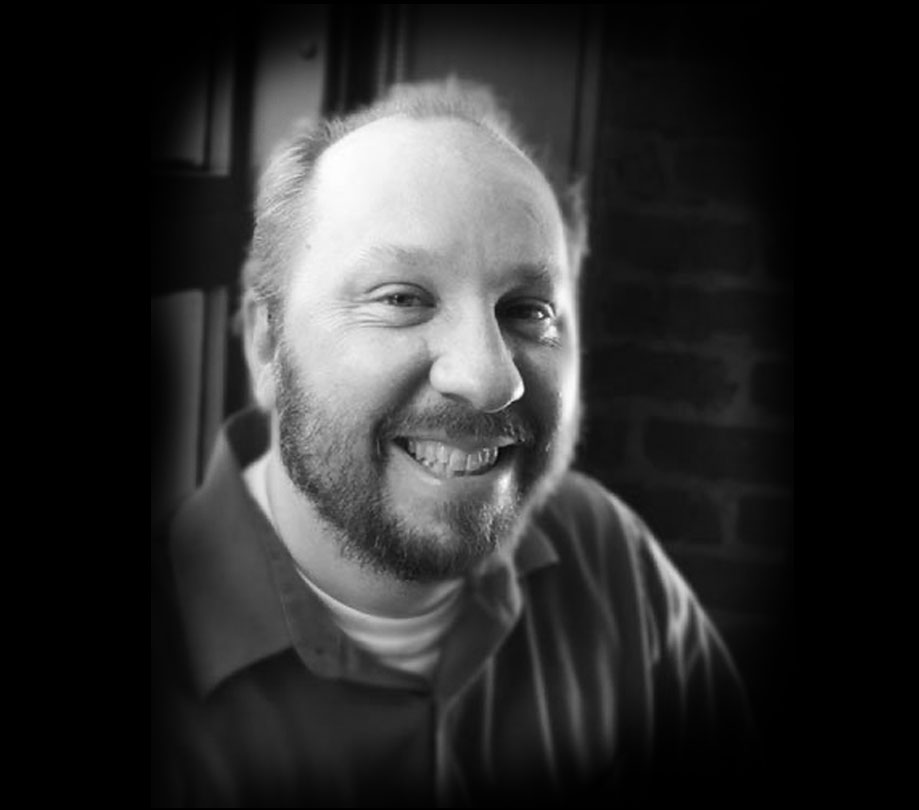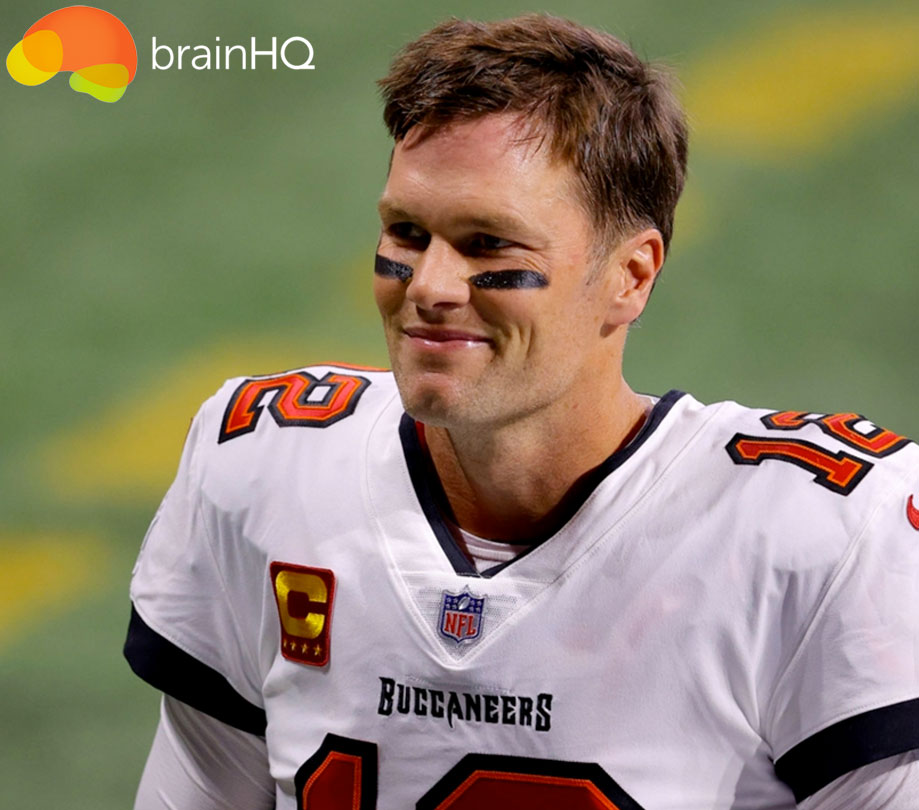Tom Brady defies age using this app
Sunday, February 7, 2021

|
Richard Harris |
We chat with Henry Mahncke (Ph.D.), CEO of BrainHQ, to learn about how Tom Brady defies age using this app; BrainHQ. We understand what the app does, some of the science behind it, how it was developed, plus how they got Tom Brady to use it to help him stay mentally young.
Tom Brady is making a record tenth Super Bowl appearance by upsetting the #1 seeded Green Bay Packers. This past summer when Brady signed with Tampa Bay, many questioned if the future hall of fame quarterback would see as much success in a new city with a new offensive system, coaches, and teammates. If he hasn't already, Brady will have a chance to put those questions to bed when he takes on the Kansas City Chiefs for his seventh Lombardi Trophy.
Most people know of Brady's greatness, but few know the role that neuroscience has played in keeping Brady productive on the field for all these years. As part of his TB12 Method, Brady stays mentally sharp using cognitive exercises from BrainHQ.
Tom Brady defies age using this app
Brady credits BrainHQ with giving him a competitive edge, allowing him to process the field split-seconds faster than his competition even into his forties. BrainHQ has been shown in hundreds of peer-reviewed studies to improve cognition, attention, decision-making, brain speed, memory, intelligence, and even people skills. If you'd like to learn more about BrainHQ exercises and how the BrainHQ team has worked with Brady to improve his performance on and off the field,
We sat dowm with Dr. Henry Mahncke, CEO of Posit Science, developers of BrainHQ, to talk about BrainHQ, how the app was made, and how they got Tom Brady to use it.
ADM: What is BrainHQ? Who uses it?
MAHNCKE: BrainHQ is a brain health app with dozens of exercises to improve brain health and performance. BrainHQ personalizes to each user within the first few minutes and continuously thereafter. BrainHQ is the pre-eminent scientifically-validated brain training. And it turns out that all kinds of people – young, old, and in-between, as well as people with very sharp brains, and people who want to have sharper brains – all use BrainHQ.
ADM: What went into developing BrainHQ?
MAHNCKE: The driving force behind BrainHQ is Dr. Michael Merzenich, Professor Emeritus at UCSF. Mike is widely credited with discovering that the brain remains plastic — capable of chemical, structural and physical change — throughout life. Mike also was the first to apply brain plasticity for human benefit, in his co-invention of the cochlear implant, which has restored hearing to 100,000s of people with deafness. For the past few decades, he has focused on using brain plasticity to improve cognitive function with computerized brain training.
Mike has won many honors for his work, including the Kavli Prize in Neuroscience (which is kind of like the Nobel Prize for our field) and honors from each of our national academies. Readers may know him from his frequent specials on public television.
I got my Ph.D. in Mike’s lab and he asked me to pull together a global team of scientists to develop, test, improve and validate the game-like exercises that go into BrainHQ. More than 400 university-based scientists are co-authors on the more than 200 published journal articles on the benefits of the exercises and assessments in BrainHQ. Those benefits include improvements on standard measures of cognitive abilities (such as, speed, attention, memory, and decision-making); improvements on standard measures of quality of life (such as, depressive symptoms, anxiety/stress/fatigue, feeling of confidence, and control, and health-related quality of life), and improvements in real-world measures (gait/balance, driving safety, activities necessary to live independently, and workplace performance).
A few years back, Alzheimer’s researchers looked at a slew of brain games marketed to older adults and found the lion’s share had zero published studies showing efficacy, and that only one had multiple-meaning two or more — high-quality studies. That, of course, was BrainHQ, with a heck of a lot more than two studies. So, BrainHQ is quite unique in a crowded marketplace.
ADM: How old is Tom Brady, and how did you get him to use BrainHQ?
MAHNCKE: Tom Brady is 43 years old in 2021, he will be 44 on August 3 - Tom was born in 1977 in San Mateo, California. It turns out we didn’t have to tell him to use our app, hhe discovered it on his own! We got a call out of the blue in February 2014 from Alex Guerrero, who is Tom’s body coach. Alex told us that Tom found BrainHQ very helpful in his play and invited us to Foxboro to meet Tom and to see the newly-opened TB12 sports training center.
So, quite quickly I’m in Foxboro meeting with Tom’s training team, which to my surprise included several neuroscientists. Tom told us directly about how BrainHQ had improved his game. Here’s something Tom wrote in his best-selling book, The TB12 Method: “As a result of using BrainHQ exercises, I can see more, see things more accurately, and make better decisions faster.”
That’s a pretty succinct description of how this training helps. We were fortunate to meet Tom and Alex as they were crystalizing how to describe the TB12 Method and were delighted that they decided to make brain training a core part of it.
We were stunned in 2017 when Tom was asked at a Super Bowl press conference about how he mentally prepares, and Tom responded with a soliloquy about BrainHQ. Shortly after that, we worked with the TB12 team to make a special version of BrainHQ, which you can find at tb12.brainhq.com.
Tom’s involvement changed how we thought about our work. We had been focused on helping people with challenges from aging or health issues and ignoring that, for example, the exercises improved the performance of the young and high-performing workforce at our company. Tom’s public embrace of BrainHQ removed any stigma of rehab and made BrainHQ like physical exercise — something we can all do to achieve and maintain peak performance.
ADM: How do these exercises help athletes? Which other athletes use BrainHQ?
MAHNCKE: BrainHQ takes what scientists call a “bottom-up” approach to brain health. It works at improving the speed and accuracy with which you process what you see and hear. If information comes in faster than you can process it, or if you cannot attend and process it accurately, it becomes difficult to store, use, or retrieve information. So, one of our primary focuses is to improve the speed and accuracy of information processing.
Speed and accuracy are incredibly important in winning games in any sport. That’s because split-seconds and inches can be the difference between a score and a miss.
For example, in pro baseball, a batter has about four-tenths of a second (that’s 400 milliseconds) from the time the ball leaves the pitcher’s hand to decide to swing and execute the swing. The execution of the swing takes 150 milliseconds, so a batter is down to a quarter second to make a decision. We also know it takes about 25 milliseconds for the decision to swing to get conveyed from the brain to your arms. We also know it takes about 50 milliseconds to recognize the pitch has left the pitcher’s hand. As a result, a player really only has about 175 milliseconds to assess the position, arc, spin, and speed of the ball and decide whether to swing. Studies show BrainHQ typically doubles the brain’s visual processing speed. One amateur player described the difference after training as “it was as though the baseball became a big beach ball lofting toward me.” That’s very descriptive and probably not that accurate, but we do know that visual speed has doubled, and that gives you much more reaction time.We don’t talk about who uses BrainHQ unless it becomes public knowledge after they talk about it. At this point, many elite athletes and teams use BrainHQ, but we know that many feel it gives them a competitive edge and wants to keep it a secret. However, if you searched online, you’d find a number of athletes who have talked with the press about BrainHQ, including Ben Watson, Brian Hoyer, Austin Cole, Wes Welker, and Harry Kane.

ADM: Can other people also find these exercises helpful at work?
MAHNCKE: There are a number of exciting studies in the workplace showing benefits. One study was with electric powerline workers. If you make a mistake and connect the wrong lines it can not only knock out a section of the grid, which is costly for everyone involved, but it can also kill the powerline worker. Talk about pressure: these workers are not allowed to make mistakes. But they’re human, and they do. Some independent safety researchers ran a randomized controlled trial where half the workers were trained on BrainHQ and compared to a control group on a standard assessment of error rate. They found a nearly 9X reduction in error on the standard test. But then they followed all these workers for four years and looked at the incident reports they have to file with the government. They found 62.5% in the BrainHQ group were error-free over the next four years, as compared to 15.8% in the control.
Of course, speed and accuracy are practically the definition of productivity, which is more and better output. In another study, researchers asked high-performing workers at a Big Tech think tank to do 10 hours of BrainHQ over the course of a month. They measured workers before and after, using standard cognitive tests, brain imaging, and surveys. On all measures, they found that these already top-performing workers improved in cognitive efficiency. Also, the employees were asked to do 10 hours and on average they did about 17 hours. So, I guess they really liked BrainHQ – and it made them more efficient.
Finally, a study in law enforcement officers looked at accuracy and inhibitory control in a live-fire shooting range study. Half the officers trained with BrainHQ exercises designed to improve visual speed and inhibitory control; the other half (in the control group) trained with exercises that were not expected to have an effect on the shooting range test. The officers were tested before and after 5-6 hours of training. The test was shooting a target of a guy with a gun that popped up for a split-second all over the range and not shooting a target of the same guy holding a cell phone. The most common error in the heat of the live fire is shooting the guy with the cell phone. They reported a 60% reduction in shooting the guy with the cell phone.
We’re also now doing work with the military, where we have very high performing servicemembers using BrainHQ to sharpen their brain function even further – just like they aim to be in peak physical condition, they’re aiming to be in peak cognitive condition.
ADM: Who is a typical user? How many users do you have?
MAHNCKE: BrainHQ is sold to individual consumers, and to organizations (such as health plans or the military) that distribute BrainHQ to their members. While our average user is in his or her early 50s, we see tremendous swings over the years based on which organizations we have recently signed up to. When we added the military, our average age plummeted. When we added Medicare Advantage plans, it went up. What users have in common is they tend to be people who are proactive about their health, who value their cognitive abilities, and are concerned about achieving and maintaining peak performance.
In a sense, each of us is an athlete in life. So, while BrainHQ can help a quarterback with the split-second perceptions and actions to find the open receiver, dodge defensive players, see an opening for a run, make better decisions faster, and remember each week’s thick new playbook; it can also help an older person with the split-second perceptions and actions to prevent a trip and a fall, avert car crashes, hear well in a noisy environment, and do everything that’s required to be able to maintain independence. Because of that, BrainHQ is now a part of a number of leading Medicare Advantage plans.
We have millions of people with paid access to BrainHQ and millions more who get started with the Daily Spark, which is our free opportunity to do a few minutes of exercise every day.
ADM: Are you taking brain training into other areas?
MAHNCKE: Yes. While our work with the military began in the area of brain injury, where we have some positive study results, it is now increasingly focused on peak performance, including among elite forces. We also have more than 100 studies among people with a variety of clinical conditions, and we are increasingly working with managed care organizations and health plans focused on better health outcomes and lower costs. We also view workplace training as a rapidly growing opportunity.
ADM: How does this compare to playing Scrabble or Sudoku or other brain games?
MAHNCKE: You should do those things if you enjoy them. Regrettably, the scientific evidence from the people who run studies on these kinds of activities is that they don’t drive measurable gains in brain health. In fact, some researchers use those kinds of games as control activities in studies of BrainHQ.
ADM: How can readers try out BrainHQ and learn more about the program?
MAHNCKE: Thanks for asking. If you go to brainhq.com you can subscribe for as little as $8 per month, or you can register and try the free version.

Dr. Henry Mahncke
Dr. Henry Mahncke, CEO of Posit Science (which makes BrainHQ), earned his Ph.D. in neuroscience at the UCSF lab in which it was first shown that the brain is plastic — capable of change — throughout life. At the behest of his academic mentor, he has led the global research team behind BrainHQ since 2003.

Become a subscriber of App Developer Magazine for just $5.99 a month and take advantage of all these perks.
MEMBERS GET ACCESS TO
- - Exclusive content from leaders in the industry
- - Q&A articles from industry leaders
- - Tips and tricks from the most successful developers weekly
- - Monthly issues, including all 90+ back-issues since 2012
- - Event discounts and early-bird signups
- - Gain insight from top achievers in the app store
- - Learn what tools to use, what SDK's to use, and more
Subscribe here




_cptybzmh.jpg)








